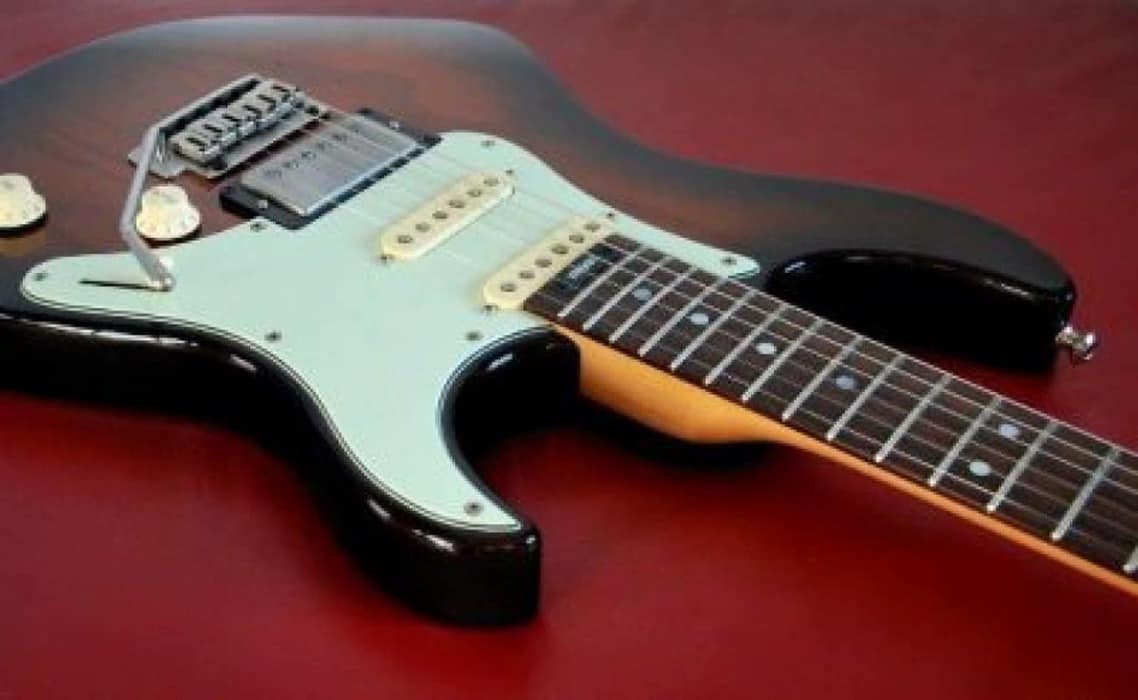Here are some brief steps about how to choose a perfect electric guitar. Which you can follow to get a good electric guitar.
How to Choose an Electric Guitar
Before we choose a good electric guitar, we need to know – how to choose an electric guitar? There are some steps to sucking it up, the ones I discussed below in detail.

Electric Guitar Body Types
There are three types of body style in electric guitar. And its own characteristics: the solid body, the hollow body, and the semi-hollow body.
Solid-Body

Read Also
- Unveiling the Yamaha FS80C: Your Definitive Handbook to Unlock the Magic of this Versatile Guitar!
- Best 10 Hindi Guitar Songs: Unveiling The Joy of Playing Guitar and the Importance of Learning Hindi Guitar Songs
- Sony Wireless Headphones Review: The Comfort of Headphones
- Which Guitar is Best for Beginners 2024 Find a Simple Way
- Yamaha FX280: Affordable Excellence in Electro-Acoustic Guitars
How to Choose an Electric Guitar: The electric guitar common body type is a solid body and it is made from a solid slab of wood. Solid-body guitars can range from a simple, single-pickup model. Although solid-body guitars don’t produce as much resonance as hollow-body models, the woods used still have an impact on the instrument’s sound.
Hollow Body

The Hollow Body electric guitars have bodies that are hollow— like an acoustic guitar and produce more resonance due to their design. Many guitarists prefer the hollow body for rich tones and deep bass response.
Semi-Hollow Body
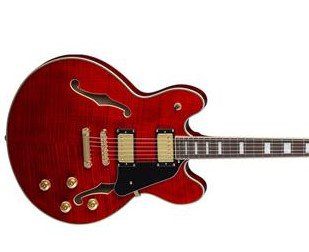
How to Choose an Electric Guitar: The semi-hollow body is almost the same as the hollow body. And the semi-hollow body sound is almost the same as a hollow body guitar. The semi-hollow body is almost the same as the hollow body. And the semi-hollow body is more resonant than the solid body. However, semi-hollow guitars are made with solid center woodblocks. Which in turn maintains stability. Different types of music can be played with semi-hollow guitars.
Read also: Best Guitar to Buy Online in India: Beginner And Pro
- Unveiling the Yamaha FS80C: Your Definitive Handbook to Unlock the Magic of this Versatile Guitar!
- Best 10 Hindi Guitar Songs: Unveiling The Joy of Playing Guitar and the Importance of Learning Hindi Guitar Songs
- Sony Wireless Headphones Review: The Comfort of Headphones
- Which Guitar is Best for Beginners 2024 Find a Simple Way
- Yamaha FX280: Affordable Excellence in Electro-Acoustic Guitars
Pickups and Electronics

The Pickups and electronics have a role to play with the body style. Many kinds of effects can be given with pickups and electronics.
Single-Coil Pickup
How to Choose an Electric Guitar: The single-coil pickup is a basic electric guitar pickup. The single-coil pickup is made of fine wire and magnet around it. This magnetic field converts the vibrations of the string into electronic signals. This magnetic field transforms the vibrations of the string into electronic signals.

Single-coil pickups sound bright and crisp. Through dense bands, they cut the tone quite well, but are vulnerable to hum production and suffer magnetic interference. Many guitarists play furnished guitars in single-coil pickups. This magnetic field transforms the vibrations of the string into electronic signals.
Single-coil pickups sound bright and crisp. Through dense bands, they cut the tone quite well, but are vulnerable to hum production and suffer magnetic interference. Many guitarists play furnished guitars in single-coil pickups.
Humbucker pickups
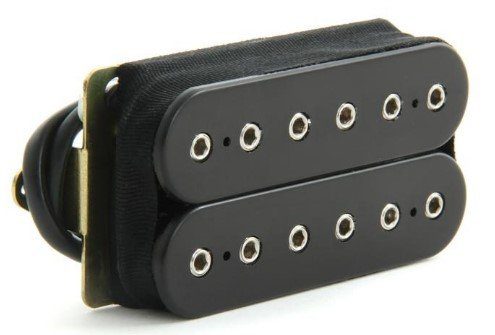
The Humbucker pickups were designed to deal with the Hum, and also provide tonal features compared to the single coil model. In this design two single-coil wounds are included together in series, the polarity of the magnets arranged opposite each other. This design helps eliminate hum. Humbuckers usually have a thicker, more loud, more powerful tone when compared to single-coils.
Piezo Pickups
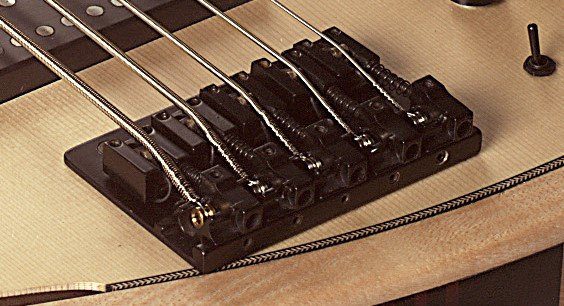
The Piezo sensors operate on mechanical vibrations, unlike magnets that convert sound from a pulsing string to an electrical current. Piezo pickups can be used to trigger a large amount of synthesizer or digital sounds, such as electronic keyboards. In most cases, piezo pickups of electric guitars are used to mimic the acoustic guitar melody.
Neck
The neck is a part of the guitar. Guitar Neck includes guitars frets, fretboard, tuners, headstock, and truss rod. The neck profile and width affect the playability of the guitar and the comfort of the player while being exciting.
Bolt-on necks

The sound of the guitar implies that the bolt-on is on the guitar’s neck. Bolt-on neck is usually made by an affordable method. Bolt-on neck guitars are easy to replace, repair and customize. The bolt-on neck guitar is less stable and resonance than the other neck guitar.
Set necks
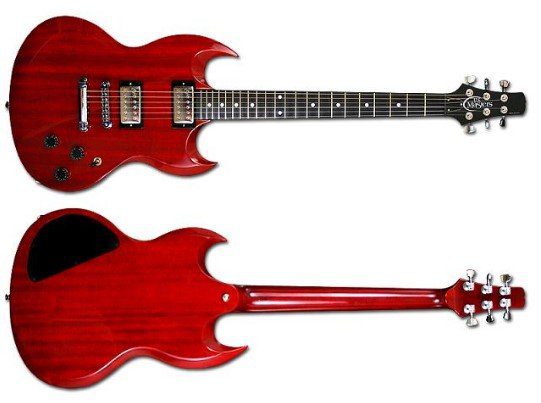
How to Choose an Electric Guitar: The set neck of the guitar body is set and glue in place, then the neck is tied to the body until the glue is dry. So it gives a more stable neck joint and better durability and resonance to the guitar.
Neck-through

How to Choose an Electric Guitar: The neck-through guitar has a neck that surprisingly expands across the entire length of the body, with the wings strapped to “wings” or ‘fins’. It gives more stability to the neck and also gives more stability and resonance when playing. However, increasing stability means that these repairs are less likely to be needed.
Tonewoods
How to Choose an Electric Guitar:
The sound of a guitar is primarily determine by the vibration of the strings and the interaction with the magnets contained in the pickup. So you might be wondering what the difference is in wood. In fact, wood has a significant effect on the way the guitar is played.
The resonance from the wood determines how long the cables vibrate and the shape of their motion. The wood pickup lets itself run. This combination plays the wood an important part of the guitar’s overall melody.
Mahogany
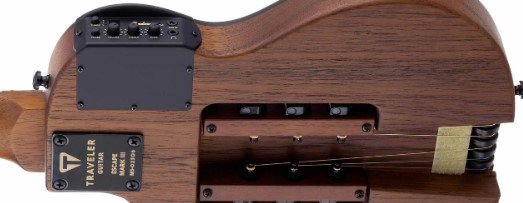
How to Choose an Electric Guitar: A mahogany tonewood neck and back are often founding on short-scale guitars with maple tops. Another common combination is the all-mahogany body and neck. Since the mahogany is not too strong, it emphasizes the midrange and bass frequencies for a lover guitar tone. Mahogany is a very resonant wood that enhances the durability of the guitar. It is usually a uniformly rich brown color.
Maple
The Maple wood is very commonly use in guitar making. Maple is very solid and thick. Often interestingly detailed grain patterns are referred to as figurines. The maple has a very bright overall tone.
Rosewood
How to Choose an Electric Guitar:
Rosewood is the most common wood use for electronic guitar fretboards. It can be very thick and hard and quite nice, ranging in color from almost black to brown and blonde. Rosewood is sometimes use on the body of an electric guitar but it does make the guitar quite heavy.
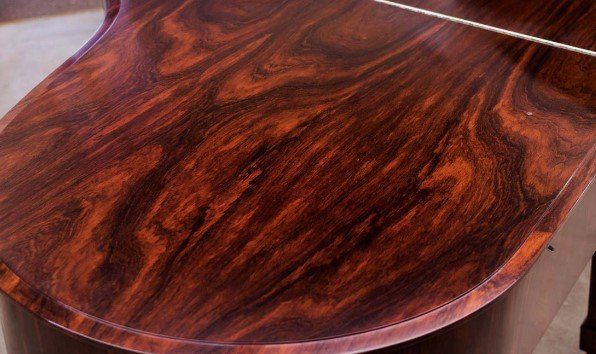
Ebony
Ebony is a very solid wood that is mainly use on the more expensive guitar fretboard. It has a silky feel and is usually almost completely black.
Ash
Ash is the material in a solid body guitar. It’s stronger than mahogany and very resonant. Ash is a particularly interesting, detailed wood used on upper edge guitars.
Alder
How to Choose an Electric Guitar: The Alder has the same sum ash but it is less expensive and it is not very impressed. The solid-body electric guitar is one of the most common woods in the body. It is usually light tan in color although it is often covere with opaque finishes.
Agatis
How to Choose an Electric Guitar:
Agatis is similar in appearance and age to tonal features, though not quite resonant. It’s usually founding on newer, more affordable guitars.
Nato
How to Choose an Electric Guitar: Nato is also known as eastern mahogany and provides a warm resonance. NATO is very powerful and is often used on the neck of less expensive electronic guitars because of its cost.
Electric guitar hardware
How to Choose an Electric Guitar: Guitars have many types of hardware that have different uses. There is usually a direct correlation between guitar prices and hardware. Good hardware can make the difference in durability and versatility of a guitar’s tune.
If you want to do a lot of improvements and upgrades, it can bring a lot of benefits. The most significant hardware components are tuning machines, bridges, and tailings.
Read also: 5 Best Acoustic Guitar Price in India
- Unveiling the Yamaha FS80C: Your Definitive Handbook to Unlock the Magic of this Versatile Guitar!
- Best 10 Hindi Guitar Songs: Unveiling The Joy of Playing Guitar and the Importance of Learning Hindi Guitar Songs
- Sony Wireless Headphones Review: The Comfort of Headphones
- Which Guitar is Best for Beginners 2024 Find a Simple Way
- Yamaha FX280: Affordable Excellence in Electro-Acoustic Guitars
Tuning Machines
Guitar tuners or machine heads are mounte on the guitar headstock. These geared mechanisms hold the strings in place and allow the instrument to tune by adjusting the string tension.
Bridges and Tailpieces
How to Choose an Electric Guitar: Bridges and Tailpieces work to affect material tone and playability. The bridge is at the bottom of the guitar body. Strings pass over the body or before the end of a Tailband. The bridges are designe to compensate for different string lengths, gauges, and metals. As a result, the strings will be aligned with each other.
How to Choose an Electric Guitar: There are many types of bridges, some of which are Common Bridges and Tailpieces. I’ll discuss these below.
Tune-o-Matic
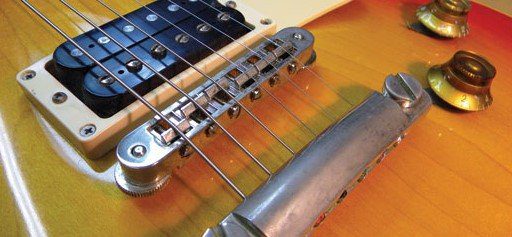
The Tune-o-Matic, developed by Gibson in the 1950s. This is a very simple design that allows for the distinct spread of the strings and the overall combination of string heights.
Two-point rocking tremolo or fulcrum vibrato
This bridge has a unique string saddle and adjustable for tone and height. This bridge has a unique string saddle and adjustable for tone and height. The bridge has a wide long plate that extends over the body of the guitar.

And this free-floating plate is attache to the interior of the guitar by a fountain that matches the tension of the strings. And clamps to any strings, helping to keep the tuning more stable.
The Trapeze tailpiece

The Trapeze tile pieces are commonly found on blank-body guitars, especially in vintage models. This type of string termination is attache to the guitar’s tail, relieving the top string tension.
Bigsby:
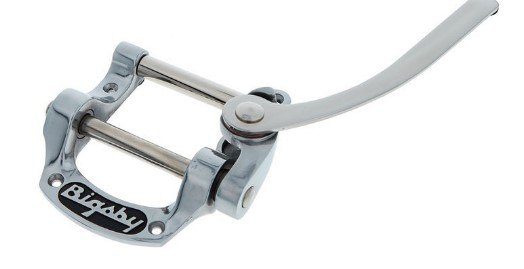
Many vintage and vintage style guitars have a spring-loaded vibrato. It is a large, relatively heavy device that includes a rotating bar with all the strings attached above it. Many players like the vintage view of Bigsby.
Electric Guitar Brands
When you go to buy a guitar, do you think which brand’s guitar will be better? And the question is, which brand and guitar will be better for beginners. For your convenience, I found out the Top 5 electric Guitar Brands.
Top 5 Electric Guitar Brand
Yamaha
Yamaha Guitar is a famous Japanese company knowing for producing a wide range of musical instruments. Due to budget-friendly prices of Yamaha guitars, it has caught the attention of beginner and intermediate guitar players. Yamaha focuses on material and sound quality all the time to produce high-quality instruments.
Fender Electric Guitar
The Fender is well knowing for making great musical instruments. Fender has always been at the top of the list since American music history. It produces a brighter tone, with a single-coil pickup than the humbuckers. And also the affordable price range with Fender superb features.
Gibson
How to Choose an Electric Guitar: Gibson is regarde as a high-level electronic guitar brand as a concern. Gibson discovery the world’s first orthotopic guitar and created the first hollow-body electric guitar.
Ibanez
How to Choose an Electric Guitar: Ibanez is a Japanese company. Ibanez produces both acoustic and electric guitars. And also they offer a wide range of guitars and bass amplifiers and other related accessories.
Epiphone
The Epiphone is an American musical manufacturer founde in 1873. Epiphone made guitars in the more expensive Gibson image but eventually, their quality started to impress them with their Emperor, Deluxe, Broadway, and Triumph. There are many advanced quality instruments in their elite series.
Electric Guitar for Beginners
Which electric guitar would you think would be best for beginners? And why not worry, if you want to buy a good guitar, there are many things to look at. But I’ve found for some of you, the Best Electric Guitar for Beginners. If you would like to see Electric Guitar for Beginners click here.
- Unveiling the Yamaha FS80C: Your Definitive Handbook to Unlock the Magic of this Versatile Guitar!
- Best 10 Hindi Guitar Songs: Unveiling The Joy of Playing Guitar and the Importance of Learning Hindi Guitar Songs
- Sony Wireless Headphones Review: The Comfort of Headphones
- Which Guitar is Best for Beginners 2024 Find a Simple Way
- Yamaha FX280: Affordable Excellence in Electro-Acoustic Guitars
Tags,
How to Choose an Electric Guitar: How to Choose an Electric Guitar: How to Choose an Electric Guitar: How to Choose an Electric Guitar: How to Choose an Electric Guitar:
